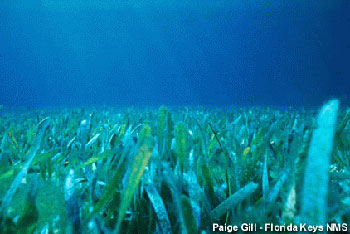Seagrass, manatee food source, threatened by development
Seagrass, manatee food source, threatened by development
mongabay.com
November 30, 2006
Seagrass ecosystems are in peril according to an article published in the December issue of the journal Bioscience.
The paper says that seagrasses, which provide important ecological services including habitat for aquatic life, mitigation of nutrient and sediment pollution, and reduction of beach erosion, are highly threatened by coastal development, pollution, and agricultural runoff. Further, the paper warns that their degradation could be sign of worsening environmental conditions.
“Seagrasses are the coal mine canaries of coastal ecosystems,” said co-author Dr. William Dennison of the University of Maryland Center for Environmental Science. “The fate of seagrasses can provide resource managers advance signs of deteriorating ecological conditions caused by poor water quality and pollution.”
The paper says that despite studies showing that seagrass is one of the most valuable habitats in coastal systems, the media seems to neglect it in its coverage of marine ecosystems. The authors found that other habitats — including salt marshes, mangroves and coral reefs — receive 3 to 100 times more media attention than seagrass systems.
 Seagrass. Image courtesy of NOAA’s National Marine Fisheries Service. |
“Translating scientific understanding of the value of seagrass ecosystems into public awareness, and thus effective seagrass management and restoration, has not been as effective as for other coastal ecosystems, such as salt marshes, mangroves, or coral reefs,” said co-author Dr. Robert Orth of the Virginia Institute of Marine Science. “Elevating public awareness about this impending crisis is critical to averting it.”
The paper recommends taking steps to protect seagrass habitat while raising public awareness about its ecological role and level of endangerment,
“This report is a call to the world’s coastal managers that we need to do more to protect seagrass habitat,” said co-author Dr. Tim Carruthers of the University of Maryland Center for Environmental Science. “Seagrasses are just one of the many keys to maintaining healthy coastal ecosystems and their biodiversity.”
Seagrass are flowering plants that grow in shallow, usually coastal marine habitats. Typically they form beds or meadows that consist of anywhere from a single species to and handful of different species. Seagrass beds host diverse communities of marine life ranging from fish to crustaceans to dugongs (manatees).
The Bioscience paper is titled “A Global Crisis for Seagrass Ecosystems.”
This article is based on a news release from the University of Maryland Center for Environmental Science.